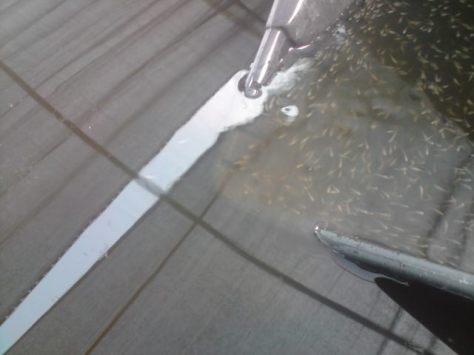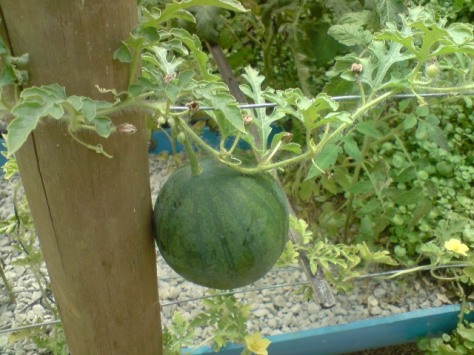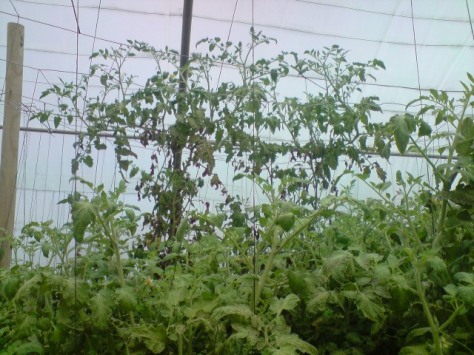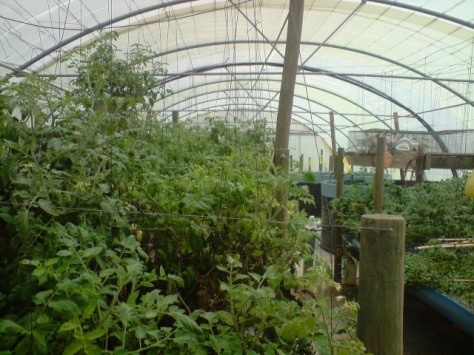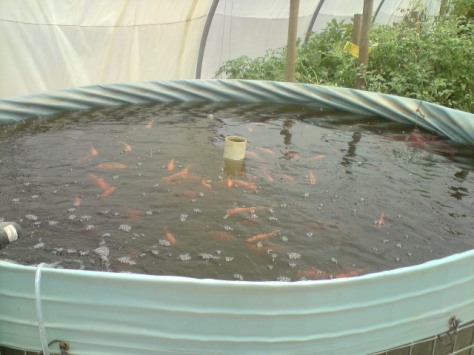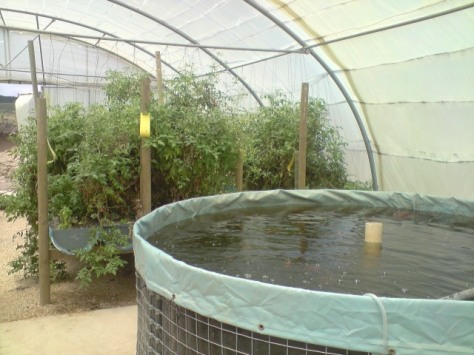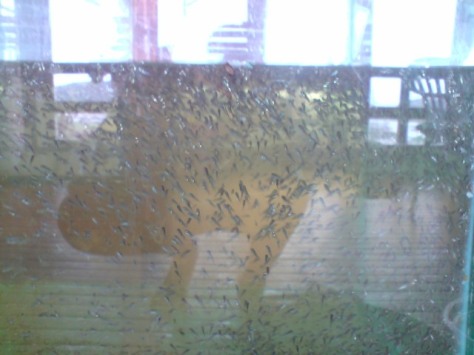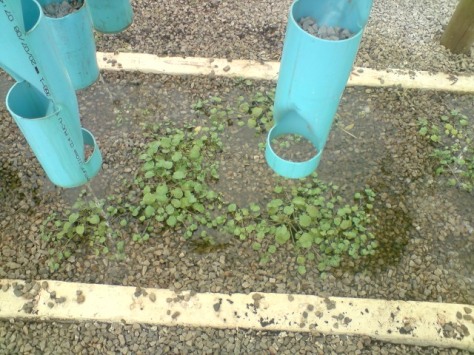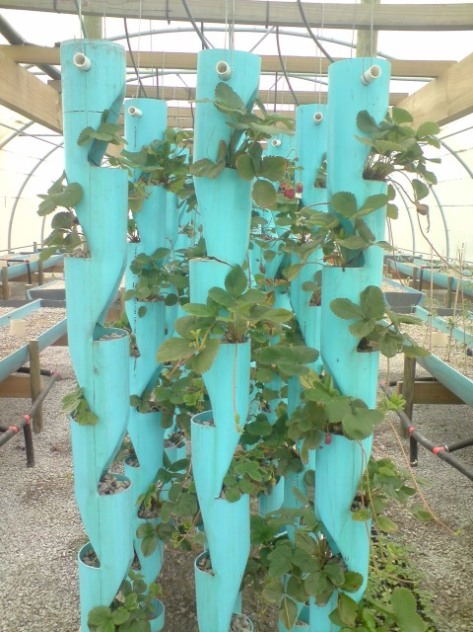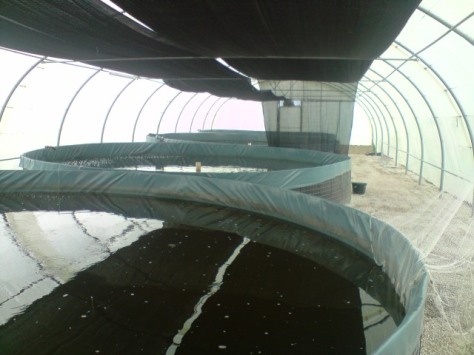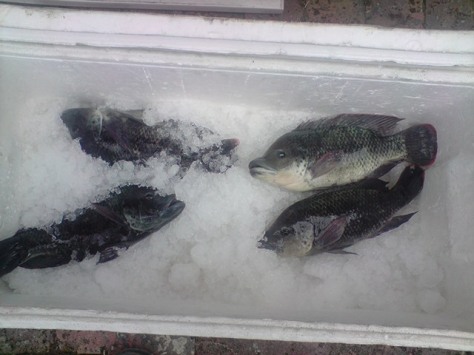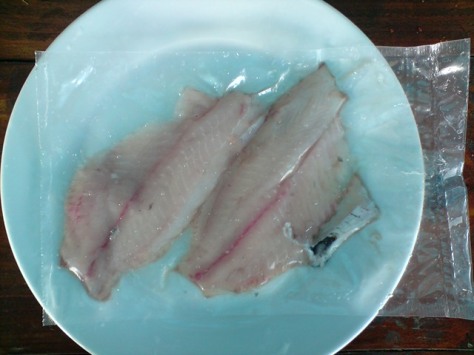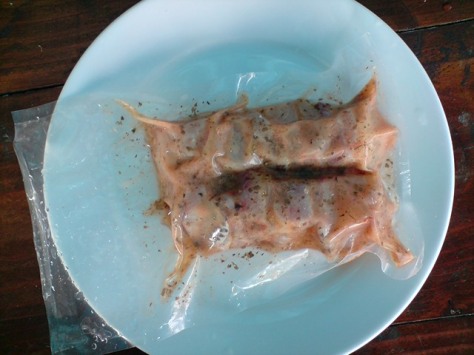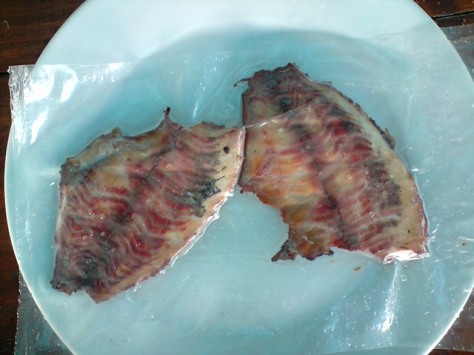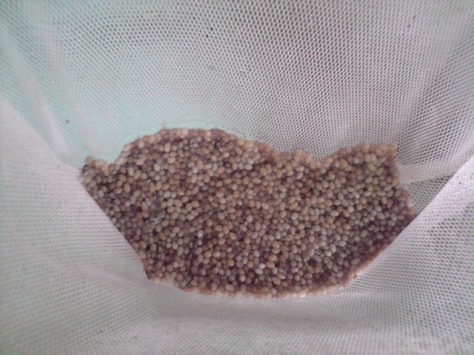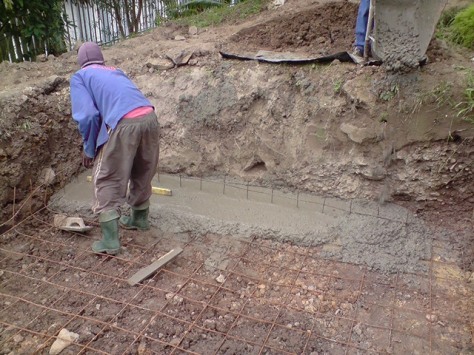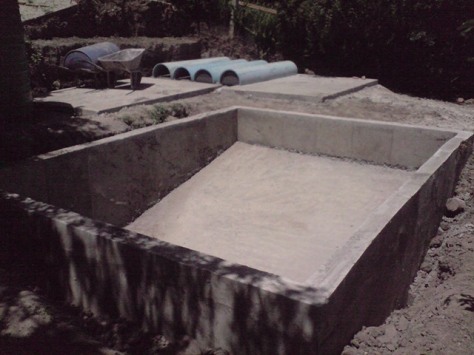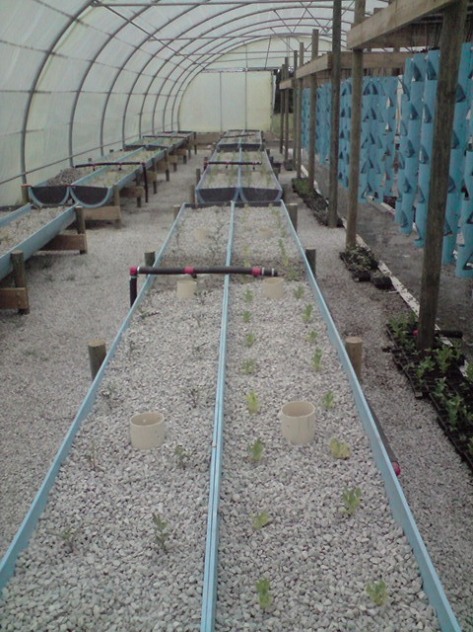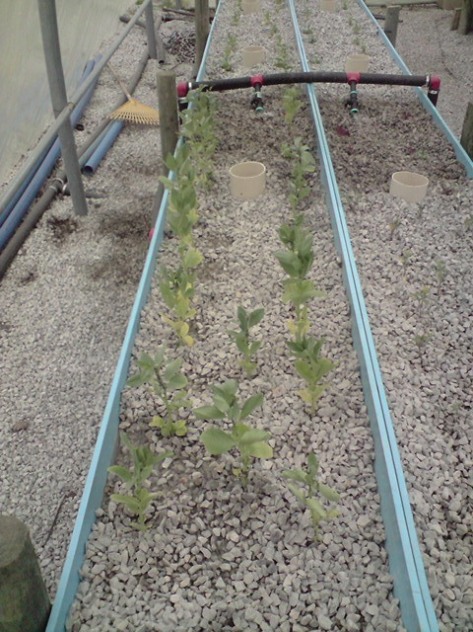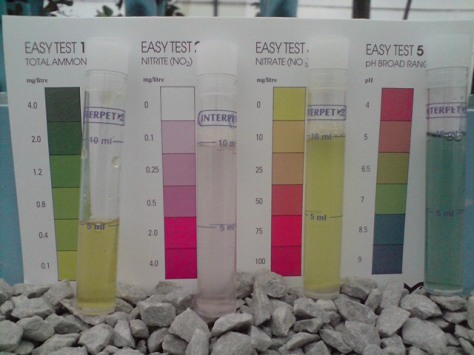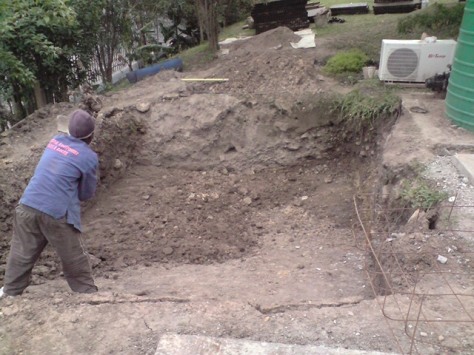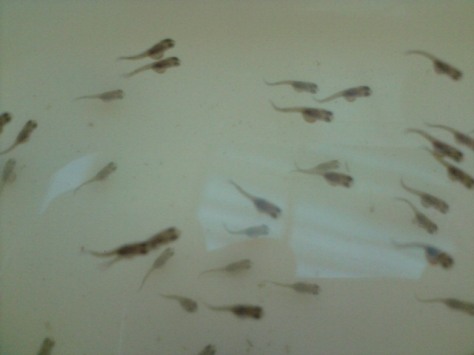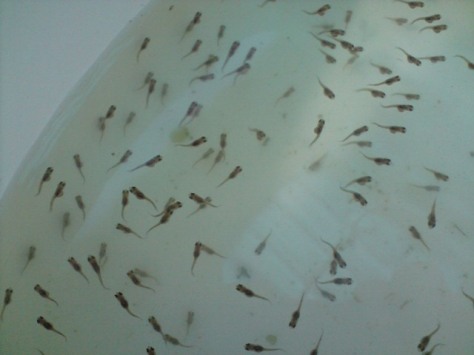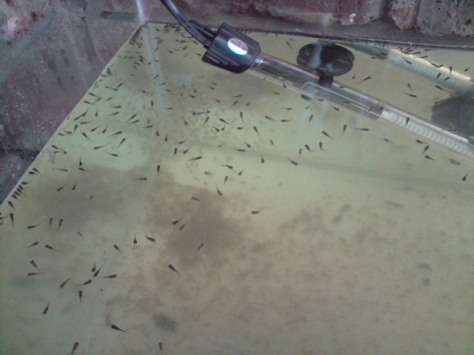There is one thing that tomato plants like and that is decent support. This is probably even more relevant in Aquaponic systems because of the continual flooding and draining of water and the nature of the growbed medium, in my case a 13mm gravel.
Traditionally, young tomato plants are staked until they get to a certain height and then supported with a wooden teepee. I have taken this concept a step further and connected a number of these teepees together.
I normally build my teepees out of bamboo, and if you don’t have any of this versatile grass growing in your garden yet, I strongly recommend that you plant some soon.
Today I built some new teepees and then lashed them together with 3 horizontal bamboo poles, one on the top and one on each side. This will provide excellent support for both the plant and the fruit once these young plants start bearing. Here is what the end product looks like.
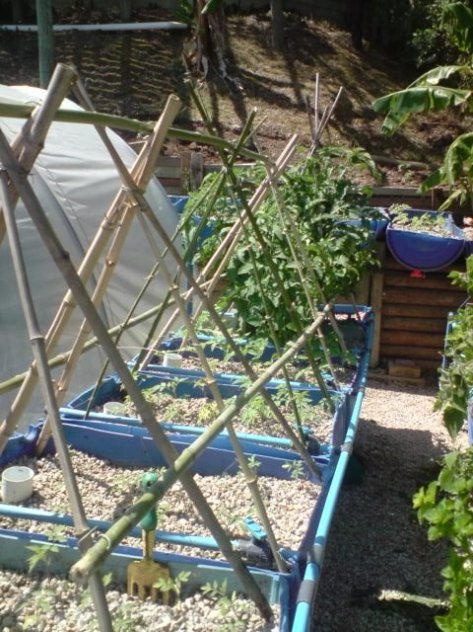
Here is a shot from underneath a well supported tomato bush.
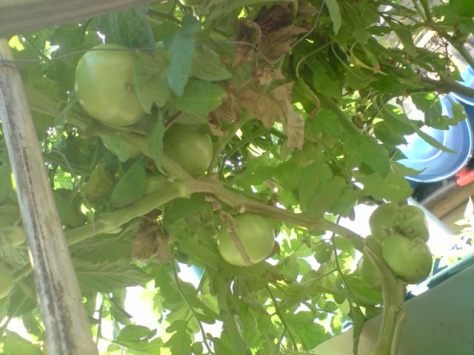
The hatchery is going from strength to strength and apart from the occasional “walk-in” sale, I am busy with no less than 3 batches of fingerlings for various local farms Feeding times are getting a slight bit complicated with 3 different types of food for the various batches as well as the adult brood fish and the goldfish.
On the subject of goldfish, I moved some bigger babies back to the goldfish pond to see how they integrate with the adults. I also topped up their water today which means that they’ll be spawning like crazy by tomorrow morning.
Water is a very scarce resource at present as we haven’t had a decent downpour this year yet, and my rainwater tank is now bone dry. I have a sneaky suspicion that this is about to change so I planted 30-odd tomato seedlings out in my garden today.
Here hoping
Synaptoman

